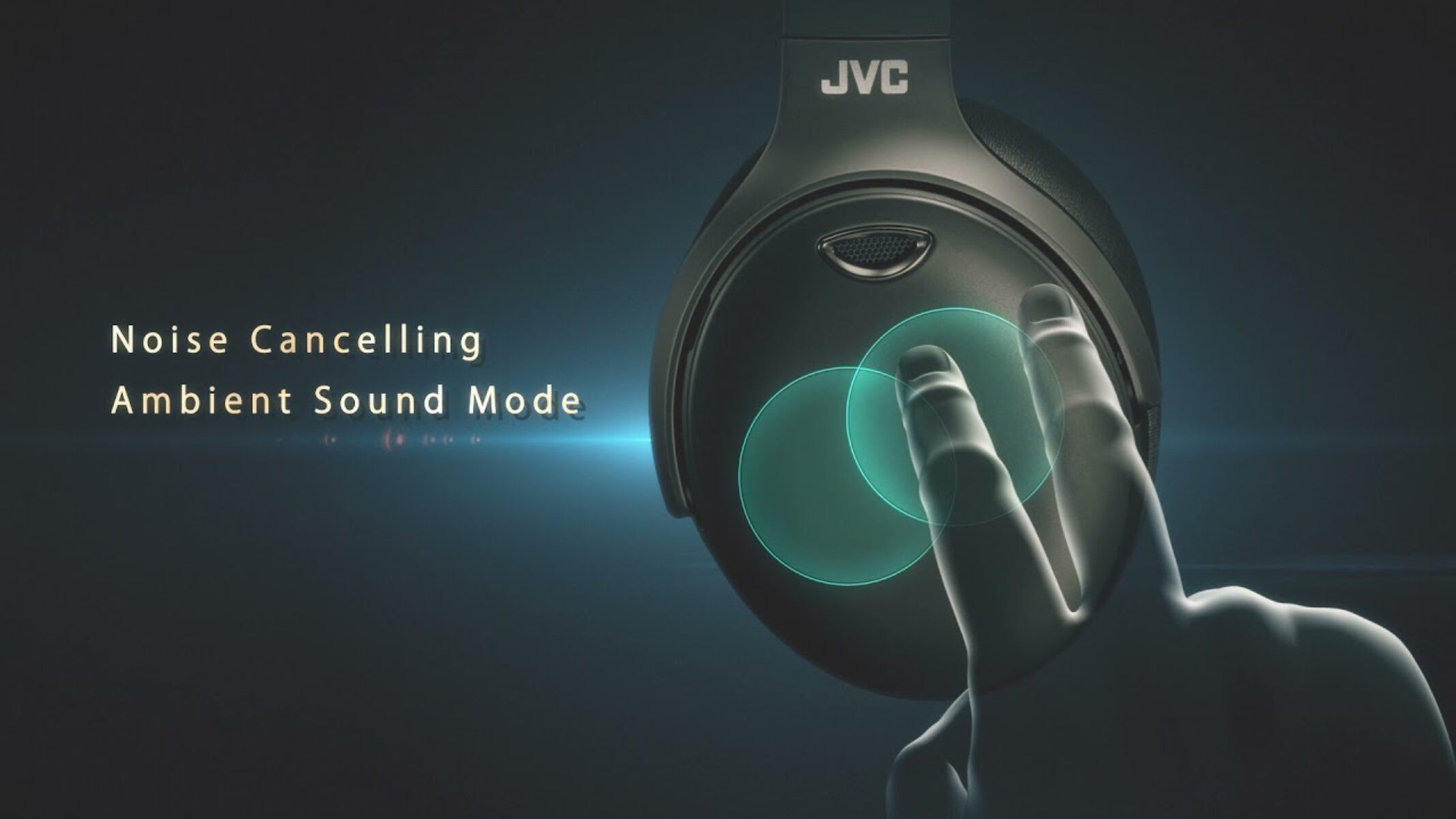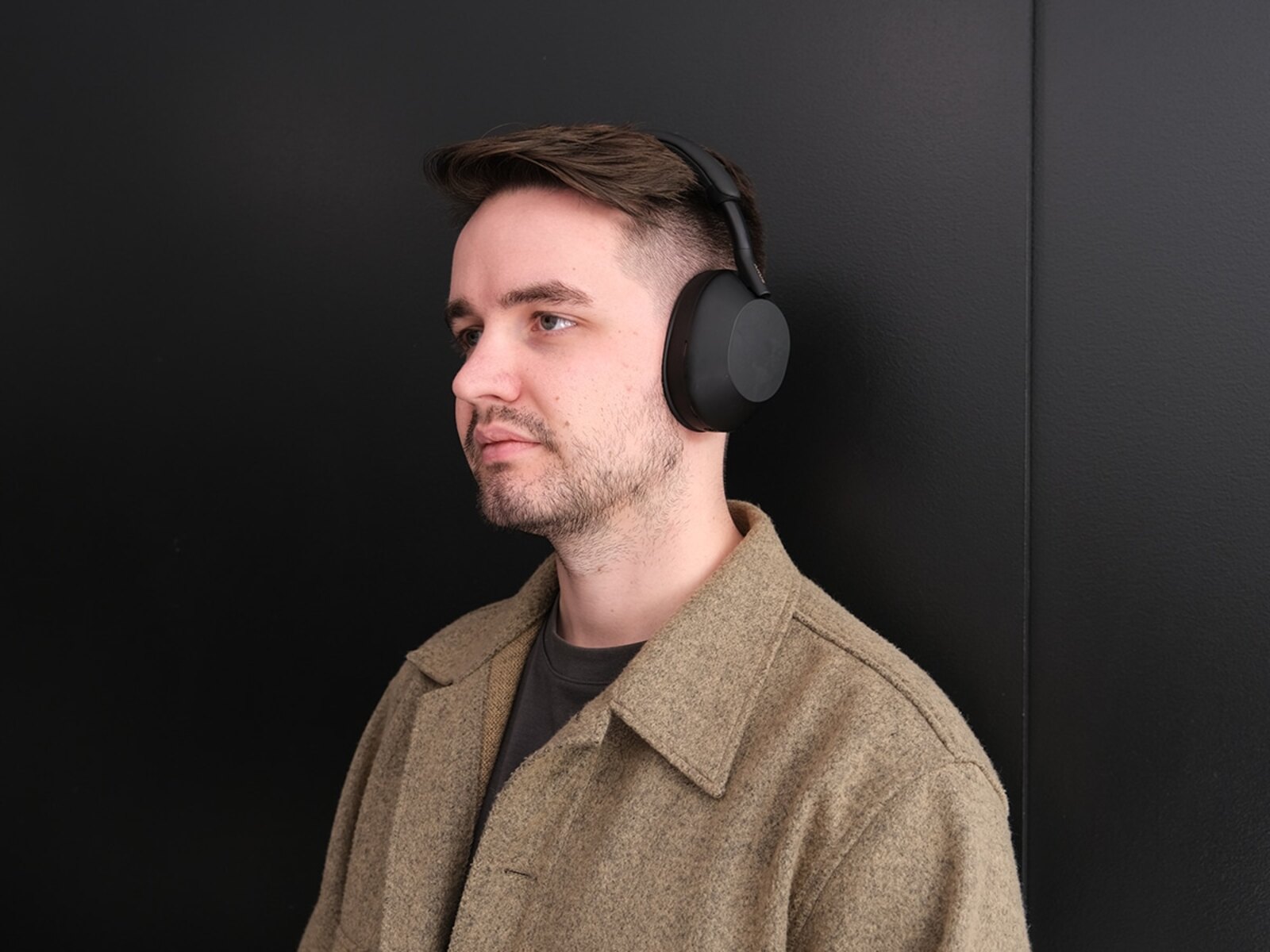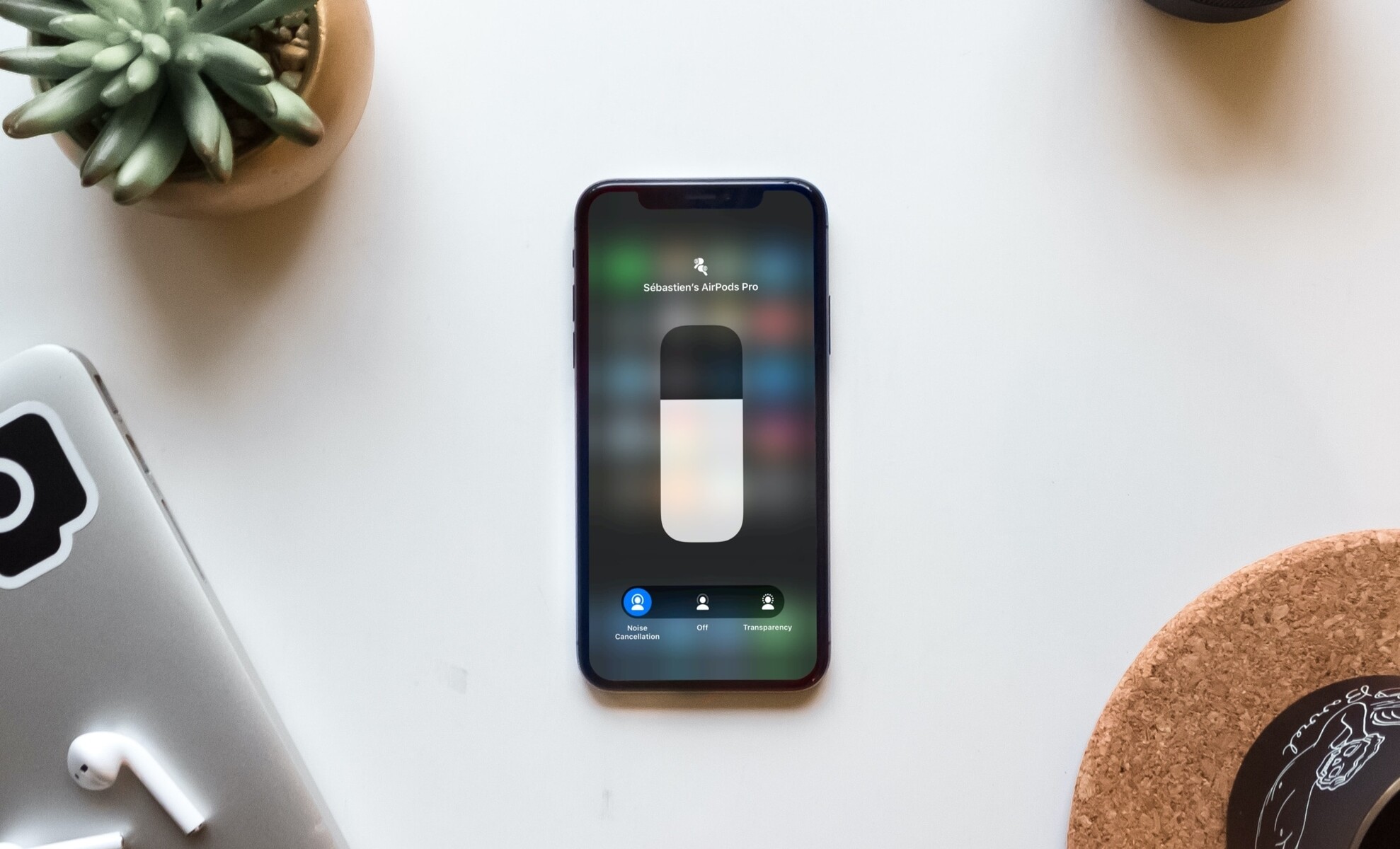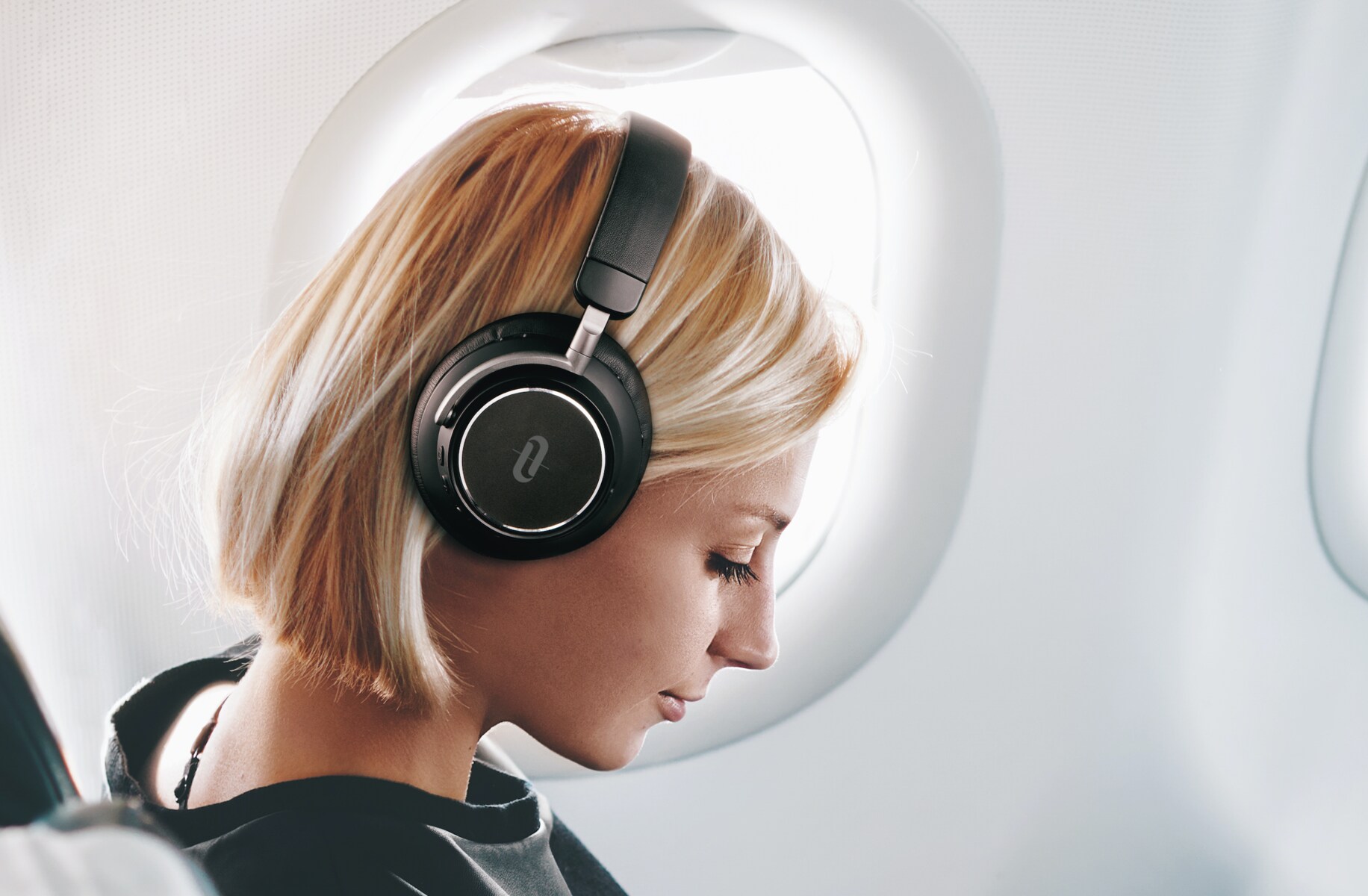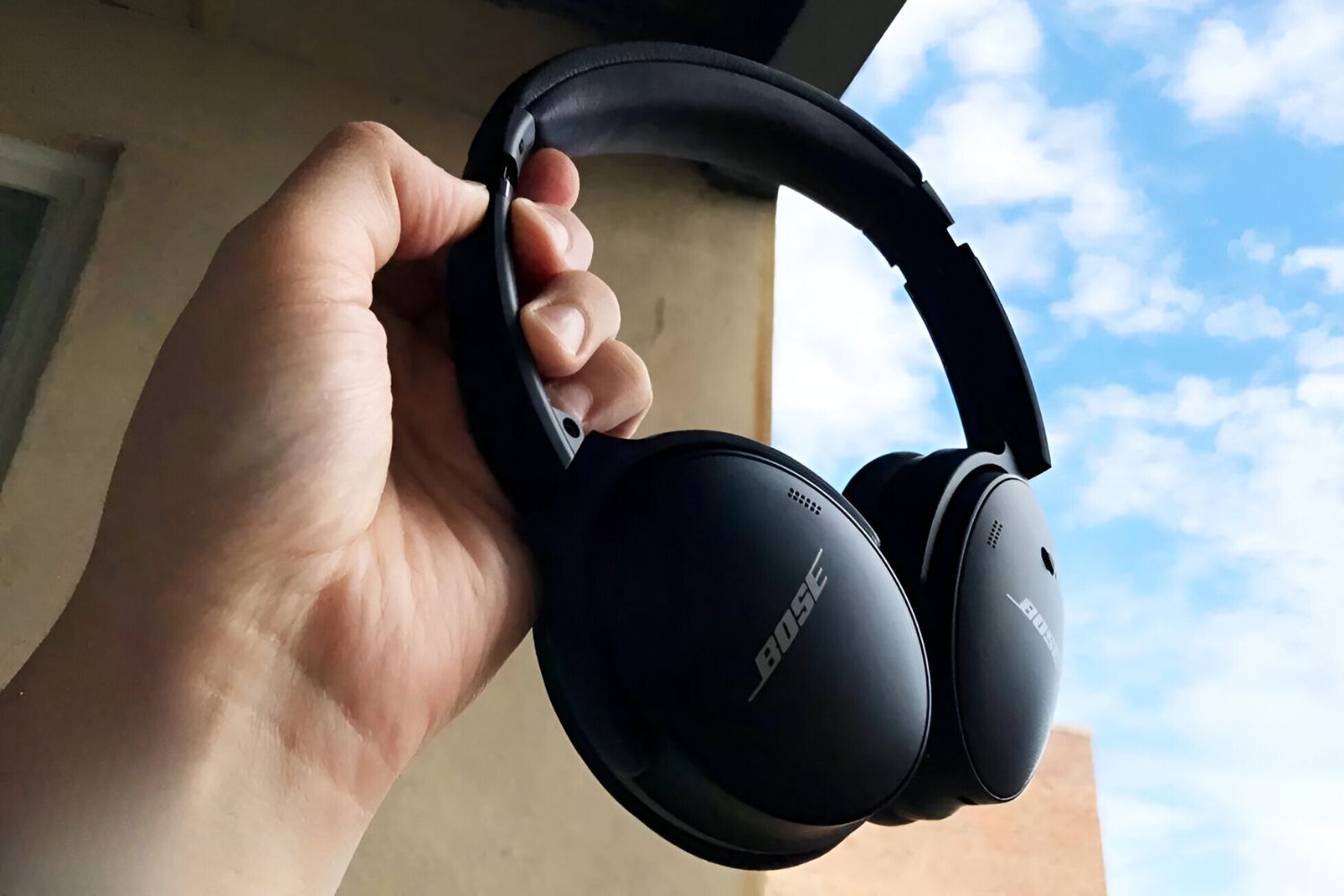Introduction
Noise Cancelling and Ambient Sound are two terms commonly associated with audio technology, particularly in the realm of headphones and earbuds. In an increasingly noisy world, these features have become essential for many individuals seeking an immersive audio experience or a peaceful environment to focus on their tasks. Understanding the difference between Noise Cancelling and Ambient Sound is crucial in determining the right audio solution for specific needs and preferences.
Noise Cancelling refers to a technology that actively reduces or eliminates external sounds by generating frequencies that oppose and cancel out the incoming noise. On the other hand, Ambient Sound, also known as Transparency Mode, allows the user to remain aware of their surroundings by blending external sounds with the audio playback. While both technologies aim to enhance the user’s audio experience, they serve different purposes and cater to distinct preferences.
In this article, we will explore the characteristics and functionalities of Noise Cancelling and Ambient Sound, highlighting their advantages and limitations. By the end, you will have a comprehensive understanding of these features, allowing you to make informed decisions when choosing audio devices that suit your specific needs and preferences.
Definition of Noise Cancelling
Noise Cancelling is a technology designed to reduce or eliminate unwanted external sounds, allowing users to have a more immersive audio experience. It is often used in headphones and earbuds, providing a high level of isolation from environmental noise. With Noise Cancelling enabled, users can enjoy their favorite music, podcasts, or movies without the distracting sounds around them.
This technology works by employing microphones in the headphones or earbuds to capture the ambient noise. The captured sound wave is then analyzed, and an inverse sound wave is generated. This inverse sound wave is played through the headphone speakers, effectively cancelling out the external noise by destructively interfering with it.
The Noise Cancelling technology utilizes electronic circuitry and algorithms to accurately generate the inverse sound wave. This process occurs in real-time, continuously adapting to the changes in ambient noise to provide an uninterrupted audio experience. Whether you are on a busy city street, a loud airplane, or in a crowded café, Noise Cancelling can significantly reduce the impact of external sounds on your listening enjoyment.
One of the key benefits of Noise Cancelling is its ability to isolate the user from low-frequency sounds, such as engine noise, hums, or constant background noise. This makes it particularly useful for frequent travelers or individuals working in noisy environments, as it helps create a more peaceful and focused audio experience.
It is important to note that Noise Cancelling is most effective at reducing continuous, low-frequency sounds. It may have limitations in canceling out sudden, sharp sounds or higher frequency noises. Additionally, the level of Noise Cancelling can vary across different headphones or earbuds, so it is essential to consider the quality and capabilities of the specific device you are using.
How Noise Cancelling Works
Noise Cancelling technology relies on a sophisticated process to minimize or eliminate external sounds. Understanding the mechanics behind how Noise Cancelling works can shed light on its effectiveness and benefits.
When you turn on Noise Cancelling on your headphones or earbuds, the technology goes to work. Built-in microphones in the device monitor the ambient sounds around you. These microphones capture the external noise, generating an electrical signal that represents the sound waves.
The captured sound signal is then processed by an electronic circuitry within the headphones. This circuitry analyzes the signal and identifies the frequencies and wavelengths of the noise. Based on this analysis, the technology generates an inverse sound wave.
The inverse sound wave is essentially the opposite of the external noise. It is an exact replica of the external sound wave, but with the opposite phase. When the inverse sound wave is played through the headphone speakers, it combines with the incoming external noise. Through a process called destructive interference, the inverse sound wave cancels out the external noise.
By effectively cancelling out the external noise, Noise Cancelling technology allows you to hear your audio content more clearly and without interruptions. Whether you are listening to music, watching a movie, or making a phone call, Noise Cancelling enhances the quality and immersion of your audio experience.
It is important to note that Noise Cancelling technology predominantly targets low-frequency sounds, which are easier to cancel out. Continuous, droning noises like airplane engines, traffic, or air conditioning units are effectively reduced by Noise Cancelling. However, sudden or impulsive sounds, such as door slams or loud voices, may not be completely eliminated.
Furthermore, Noise Cancelling can have a varying degree of effectiveness depending on the quality and capabilities of your headphones or earbuds. High-end models often provide superior Noise Cancelling performance, while lower-priced options may offer a more modest level of noise reduction.
Overall, Noise Cancelling technology employs advanced algorithms and powerful electronics to create an immersive and uninterrupted audio experience by reducing or eliminating external noise.
Advantages of Noise Cancelling
Noise Cancelling technology offers several advantages that significantly enhance the audio experience for users. These advantages make it a desirable feature for those seeking a more immersive and focused listening experience.
1. Enhanced Audio Quality: By cancelling out external noise, Noise Cancelling allows you to hear your audio content with greater clarity and detail. You can fully immerse yourself in your favorite music, podcasts, or movies without the distraction of background noise. This results in a more enjoyable and enriching audio experience.
2. Improved Focus and Concentration: Whether you are working in a noisy open office or studying in a bustling cafe, Noise Cancelling can help create a more peaceful and conducive environment. By reducing or eliminating external distractions, you can concentrate better and maintain your focus on the task at hand.
3. Reduced Fatigue and Stress: Being exposed to constant background noise can be tiring and stressful. Noise Cancelling technology provides relief by minimizing the impact of environmental sounds. This can lead to reduced fatigue and stress levels, allowing you to relax and maintain a calmer state of mind.
4. Privacy and Confidentiality: Noise Cancelling can be particularly valuable in situations where privacy and confidentiality are crucial. Whether you are taking a confidential phone call in a public space or listening to sensitive audio content, Noise Cancelling ensures that your conversations and content remain private by preventing others from overhearing.
5. Travel Comfort: Traveling can be noisy, especially in airplanes, trains, or buses. Noise Cancelling headphones provide a peaceful and secluded audio experience, allowing you to escape the noise of the surroundings and enjoy your journey in tranquility.
6. Health Benefits: Exposure to high levels of continuous noise can have adverse effects on your health, such as increased stress levels and disturbed sleep patterns. Noise Cancelling technology can mitigate these issues by reducing the impact of external noise, promoting a healthier and more peaceful auditory environment.
It’s important to note that while Noise Cancelling offers numerous advantages, its effectiveness can vary depending on the quality and capabilities of your headphones or earbuds. Higher-end models with advanced Noise Cancelling technology tend to provide more superior noise reduction compared to budget-friendly options.
Overall, Noise Cancelling technology delivers a range of benefits that enhance the audio experience by minimizing external noise and allowing users to enjoy their audio content with greater clarity, focus, and comfort.
Limitations of Noise Cancelling
While Noise Cancelling technology offers several advantages, it is important to consider its limitations in order to make informed decisions about its usage and effectiveness.
1. Ineffectiveness for Certain Sounds: Noise Cancelling technology is most effective at reducing continuous, low-frequency sounds, such as engine noise or the hum of air conditioning units. However, it may not be as effective in cancelling out sudden, sharp sounds or higher frequency noises. These types of sounds can still seep through, requiring extra caution in environments where such noises may be present.
2. Sound Artifacts: Noise Cancelling technology generates an inverse sound wave to cancel out external noise, and sometimes this can result in unintended sound artifacts. These artifacts can manifest as a faint background hiss or a reduction in audio quality. While advancements in technology have significantly minimized these artifacts, it is still a consideration to keep in mind when using Noise Cancelling devices.
3. Dependency on Battery: Most Noise Cancelling headphones or earbuds require power to operate the Noise Cancelling feature. This means that you will need to ensure your device is charged or has fresh batteries for the Noise Cancelling function to work. In the event of a drained battery, you may lose the Noise Cancelling functionality and be left with standard headphones or earbuds.
4. Cost Considerations: Noise Cancelling technology is typically found in higher-end headphones and earbuds, which can come with a higher price tag compared to standard audio devices. While the investment can be worthwhile for those who require noise reduction in their audio experience, it may not be cost-effective for everyone.
5. Physical Design and Comfort: Noise Cancelling technology often requires additional components and circuitry within the headphones or earbuds, which might add extra weight or bulk. Some individuals may find this less comfortable or prefer a sleeker design without Noise Cancelling capabilities.
It is crucial to note these limitations to manage expectations when using Noise Cancelling technology. They help highlight the situations where Noise Cancelling might not provide optimal results and inform potential users about scenarios where alternative solutions might be more suitable.
Definition of Ambient Sound
Ambient Sound, also known as Transparency Mode or Ambient Mode, is a feature found in some headphones and earbuds that allows the user to remain aware of their surroundings while listening to audio content. It works by blending external sounds with the audio playback, providing a more natural and immersive audio experience.
When the Ambient Sound feature is enabled, the device’s built-in microphones capture the sounds from the environment around you. These sounds are then mixed with the audio playback from your headphones or earbuds. The result is a seamless integration of both external sounds and the audio content, allowing you to have a more balanced perception of your surroundings.
One of the primary purposes of Ambient Sound is to enhance situational awareness. It can be particularly useful in scenarios where it is essential to hear important announcements, approaching vehicles, or to engage in conversations while still enjoying your audio content. This feature is commonly utilized by individuals who exercise outdoors, commute in busy areas, or need to maintain awareness in public spaces.
Ambient Sound not only allows you to hear external sounds but also helps prevent the feeling of isolation that can be associated with noise-canceling headphones. By maintaining a connection with your environment, you can feel more in tune with your surroundings and react quickly to any potential hazards or stimuli.
It is important to note that the level of ambient sound blending can be adjusted or customized on some devices. This allows you to find the right balance that suits your preferences and the specific environment you are in. Some headphones or earbuds may offer different levels of ambient sound blending, providing more or less external sound depending on your needs.
Ambient Sound technology offers a different audio experience compared to noise-canceling headphones. While noise-canceling aims to block out external sounds, Ambient Sound enhances your awareness of those sounds, allowing for a more inclusive and interactive audio experience.
How Ambient Sound Works
Ambient Sound technology works by utilizing microphones to capture external sounds and blending them with the audio playback from your headphones or earbuds. This process allows you to remain aware of your surroundings while enjoying your audio content.
When you activate the Ambient Sound feature, the microphones in your headphones or earbuds pick up the sounds from the environment around you. These sounds may include conversations, traffic noise, or other ambient sounds. The captured external sounds are then mixed with the audio playback from your audio device.
The blended sound is then transmitted to your ears, providing a more natural and immersive audio experience. By combining the external sounds with your audio content, Ambient Sound allows you to hear both the audio playback and the surrounding environment simultaneously.
The level of blending between the external sounds and the audio playback can usually be adjusted on your headphones or earbuds. This gives you the flexibility to customize the level of ambient sound according to your preference and the specific situation you are in.
Ambient Sound technology relies on advanced signal processing algorithms to ensure a seamless integration of the external sounds and the audio playback. The technology is designed to enhance situational awareness by allowing you to hear important sounds while still enjoying your audio content.
It’s worth noting that the effectiveness of Ambient Sound can vary depending on the quality of the microphones and the audio device. Higher-end headphones or earbuds may provide more accurate and clear capturing of the external sounds, resulting in a more realistic and natural blend.
Ambient Sound is especially useful in situations where it is important to maintain awareness of your surroundings. Whether you are walking in a crowded area, exercising outdoors, or commuting in a busy setting, the ability to hear external sounds can help you stay safe and engaged.
Overall, Ambient Sound technology enhances your audio experience by allowing you to hear both your audio content and the sounds from your environment simultaneously, providing a more balanced and inclusive listening experience.
Advantages of Ambient Sound
Ambient Sound technology offers several advantages that make it a valuable feature for users who want to remain aware of their surroundings while enjoying their audio content. These advantages enhance situational awareness and provide a more inclusive listening experience.
1. Improved Safety: By blending external sounds with your audio playback, Ambient Sound allows you to maintain awareness of your surroundings, making it safer to engage in activities such as walking, running, or cycling outdoors. You can hear important sounds, such as approaching vehicles or sirens, which helps prevent accidents and ensures your safety.
2. Enhanced Situational Awareness: Ambient Sound enables you to hear ambient sounds, such as conversations or announcements, while still enjoying your audio content. This enhanced awareness is particularly useful in public spaces, busy streets, or crowded areas where it is important to stay alert and respond to your environment.
3. Natural Sound Experience: Ambient Sound technology provides a more natural and immersive audio experience. By blending the external sounds with your audio playback, you can avoid the feeling of isolation often associated with traditional noise-canceling headphones. This creates a more comfortable and enjoyable listening experience.
4. Convenience in Social Situations: Ambient Sound is beneficial when you need to interact with others while still enjoying your audio content. Whether you are having a conversation with a friend, participating in a meeting, or listening for public announcements, Ambient Sound allows you to remain engaged with the people around you without compromising your audio experience.
5. Customizable Blending Levels: Many headphones and earbuds with Ambient Sound capabilities offer adjustable blending levels. This allows you to customize the amount of external sound that is mixed with your audio playback. You can increase the level of ambient sound blending in quieter environments, or decrease it in noisier environments, depending on your preferences and needs.
It is important to note that Ambient Sound is not suitable for every situation. There may be instances where complete isolation from external sounds is necessary, such as when you need to focus on critical tasks or enjoy your audio content without any distractions. In such cases, noise-canceling headphones may be more appropriate.
Overall, the advantages of Ambient Sound technology lie in its ability to provide enhanced safety, situational awareness, and a natural sound experience. This makes it a valuable feature for individuals who need to remain connected to their environment while enjoying their audio content.
Limitations of Ambient Sound
While Ambient Sound technology offers several advantages, it is important to be aware of its limitations to ensure realistic expectations and informed decision-making.
1. Sound Quality: When using Ambient Sound, the external sounds are blended with the audio playback, which may result in a slight decrease in sound quality compared to pure audio playback. The level of sound quality reduction can vary depending on the specific headphones or earbuds and the quality of the external sound capturing microphones. It’s important to consider your priorities when it comes to sound fidelity versus situational awareness.
2. Ineffective Noise Reduction: Ambient Sound is not designed to block out or reduce external noise significantly. While it allows you to hear your surroundings, it may not provide the same level of noise isolation as noise-canceling headphones. In loud environments, background noise can still be present and may impact your listening experience.
3. Dependency on Microphone Quality: The effectiveness of Ambient Sound depends heavily on the quality and positioning of the built-in microphones in the headphones or earbuds. Higher-quality microphones will capture external sounds more accurately, whereas lower-quality microphones may result in a less realistic or distorted sound blend. It’s important to consider the microphone performance when choosing headphones or earbuds with Ambient Sound capabilities.
4. Reduced Immersion: While Ambient Sound enhances situational awareness, it may reduce the immersive nature of your audio experience. The blending of external sounds can create a less focused and more diluted audio experience, which may not be ideal for activities such as music enjoyment or movie watching where complete audio immersion is desired.
5. Battery Consumption: Enabling Ambient Sound can impact the battery life of your headphones or earbuds. The mixing and processing of external sounds require additional power, which may result in shorter battery life. It is important to consider the battery capacity and usage time of the device when utilizing the Ambient Sound feature.
It is crucial to weigh these limitations against the advantages of Ambient Sound when making a decision. Consider your specific needs, usage scenarios, and preferences to determine if Ambient Sound is the right choice for you.
Comparison between Noise Cancelling and Ambient Sound
Noise Cancelling and Ambient Sound are two distinct audio technologies that cater to different needs and preferences. Understanding the differences between these features can help you make an informed decision when selecting headphones or earbuds.
1. Noise Reduction Capability: Noise Cancelling is specifically designed to reduce or eliminate external sounds. It actively generates inverse sound waves to cancel out the incoming noise, providing a more immersive audio experience. Ambient Sound, on the other hand, blends external sounds with the audio playback, allowing you to hear both your surroundings and the audio content simultaneously.
2. Situational Awareness: Noise Cancelling provides a high level of isolation by blocking out external sounds. While this can be advantageous in noisy environments, it can also limit your awareness of important sounds in your surroundings. In contrast, Ambient Sound enhances situational awareness by incorporating external sounds. It allows you to stay connected with your environment, which is beneficial in situations where awareness of your surroundings is crucial for safety or engagement.
3. Immersion and Sound Fidelity: Noise Cancelling technology provides a more immersive audio experience by eliminating external distractions. It allows you to focus solely on your audio content, providing a more concentrated and immersive sound environment. Ambient Sound, on the other hand, offers a more natural and inclusive audio experience by blending external sounds with the audio playback. While this enhances situational awareness, it may dilute the immersion and sound fidelity compared to pure audio playback without external sounds.
4. Battery Consumption: Both Noise Cancelling and Ambient Sound features consume additional battery power. However, Noise Cancelling typically requires more power due to the complex processing involved in generating inverse sound waves. Ambient Sound, which involves the blending of external sounds, requires less processing power and thus may be more energy-efficient. Consider the battery life and capacity of your headphones or earbuds when deciding on the desired feature.
5. Personal Preferences and Use Cases: Deciding between Noise Cancelling and Ambient Sound ultimately depends on personal preferences and specific use cases. If you prioritize blocking out external noise for a more immersive audio experience or require quiet for concentration, Noise Cancelling may be the better choice. Conversely, if situational awareness and the ability to hear your surroundings are important to you, Ambient Sound provides a more balanced listening experience.
It’s important to assess your needs and the environments in which you’ll be using your headphones or earbuds to determine which feature aligns best with your preferences and requirements.
Conclusion
Choosing between Noise Cancelling and Ambient Sound technology depends on your personal preferences, specific use cases, and desired audio experience. Each feature offers distinct advantages and limitations that should be considered when selecting the right headphones or earbuds.
Noise Cancelling technology excels at reducing or eliminating external sounds, providing a focused and immersive audio experience. It is ideal for individuals who seek to block out distractions and enjoy their audio content without interference. Noise Cancelling is especially beneficial in noisy environments or when concentration is paramount. However, it may limit situational awareness and external sound perception.
Ambient Sound technology, on the other hand, blends external sounds with the audio playback, allowing users to hear and remain connected with their surroundings. It enhances situational awareness, making it suitable for situations where being cognizant of important sounds or having conversations while listening to audio content is crucial. However, Ambient Sound may reduce audio immersion and sound fidelity compared to pure audio playback.
Ultimately, the choice between Noise Cancelling and Ambient Sound depends on your individual needs and preferences. Consider the level of noise reduction desired, the need for situational awareness, the importance of sound quality, and battery consumption when making your decision.
Both Noise Cancelling and Ambient Sound technologies have their merits and can greatly enhance your audio experience. It is important to evaluate the features as well as the limitations to find the technology that aligns best with your specific requirements and listening preferences.
Now armed with a comprehensive understanding of Noise Cancelling and Ambient Sound, you can confidently make a well-informed decision when selecting headphones or earbuds that cater to your audio needs and preferences.







